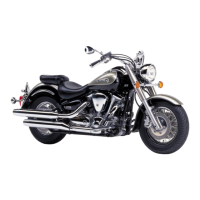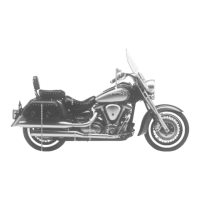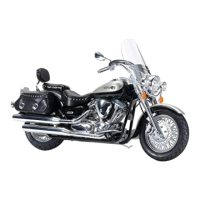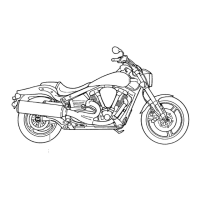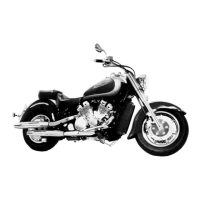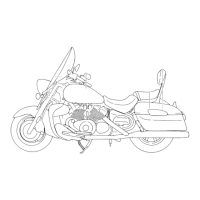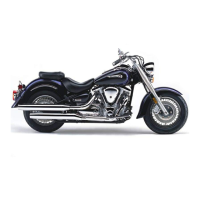
Do you have a question about the Yamaha Road Star XV1600AT 2004 and is the answer not in the manual?
| Brand | Yamaha |
|---|---|
| Model | Road Star XV1600AT 2004 |
| Category | Motorcycle |
| Language | English |
Definitions of key notations (WARNING, CAUTION, NOTE) used in the owner's manual.
Guidance on safe operation, visibility, operator qualifications, and road awareness.
Essential protective apparel like helmets, jackets, and gloves for rider safety.
Impact of modifications and guidelines for adding accessories to the motorcycle.
Precautions for gasoline, exhaust fumes, refueling, and parking.
Identification of key labels and essential tire safety information for proper operation.
Identification and location of components visible from the left side of the motorcycle.
Identification and location of components visible from the right side of the motorcycle.
Overview of the motorcycle's controls and instrument panel layout.
Operation of the main switch for ignition, lighting, and steering lock functions.
Explanation of dashboard indicators, warning lights, speedometer, and odometer.
Information on the fuel level indicator and the motorcycle's self-diagnosis system.
Description of handlebar switches, clutch lever, throttle grip, and brake lever.
Operation of shift and brake pedals, fuel tank cap, and fuel cock.
Operation of starter knob, locking steering, and accessing the rider seat and helmet holder.
Details on adjusting the shock absorber preload and engine idling speed.
Sidestand operation and the safety function of the ignition circuit cut-off system.
A list of essential checks to perform before each ride for safety and vehicle condition.
Procedures for starting and warming up both cold and warm engines safely.
Guidance on proper gear shifting and tips to reduce fuel consumption.
Instructions for the critical engine break-in period (0-1600 km) to ensure engine longevity.
Safe procedures and precautions for parking the motorcycle, considering hot components and stability.
Location of the tool kit and the schedule for periodic maintenance jobs.
Procedures for checking spark plugs and servicing engine oil and the oil filter cartridge.
Steps for checking and changing transfer case oil and cleaning the air filter element.
Guidance on carburetor adjustment, engine idling speed, and throttle cable free play.
Adjusting valve clearance, checking tires, and inspecting spoke wheels.
Checking brake pads, fluid levels, light switches, and procedures for changing brake fluid.
Checking and adjusting drive belt slack, and lubricating control cables.
Lubricating brake/shift pedals, clutch/brake levers, and the sidestand for smooth operation.
Inspecting front fork, steering bearings, and wheel bearings for proper function and wear.
Details on the sealed battery and procedures for replacing fuses.
Replacing headlight and signal bulbs, and methods for supporting the motorcycle.
General troubleshooting information and a chart for diagnosing common operational issues.
Importance of regular cleaning and specific procedures for washing and drying the motorcycle.
Guidelines for both short-term and long-term storage to protect the motorcycle.
Spaces to record key and vehicle identification numbers for spare parts and registration.
Information regarding motorcycle noise control systems and tampering prohibitions.
